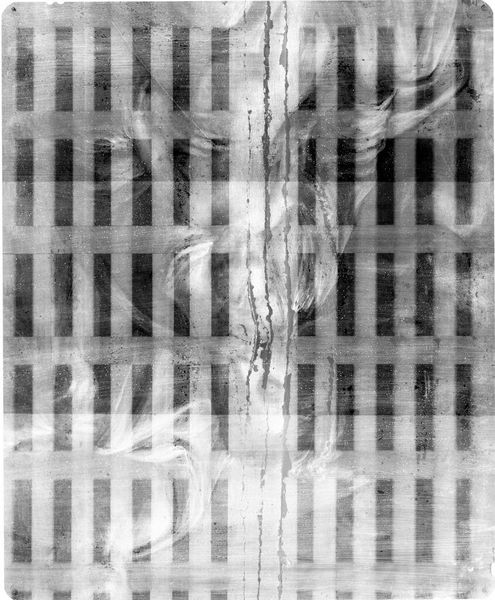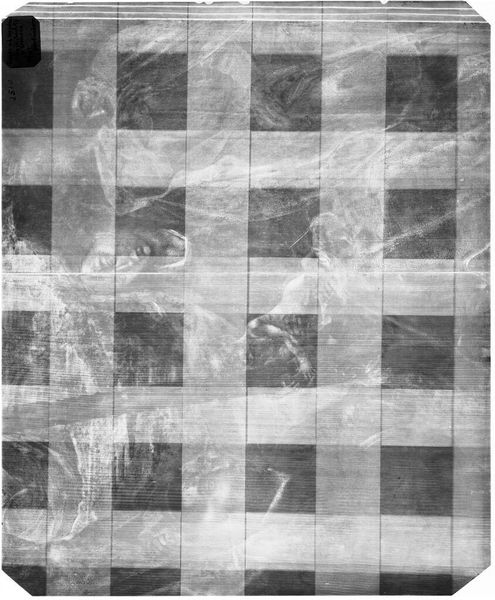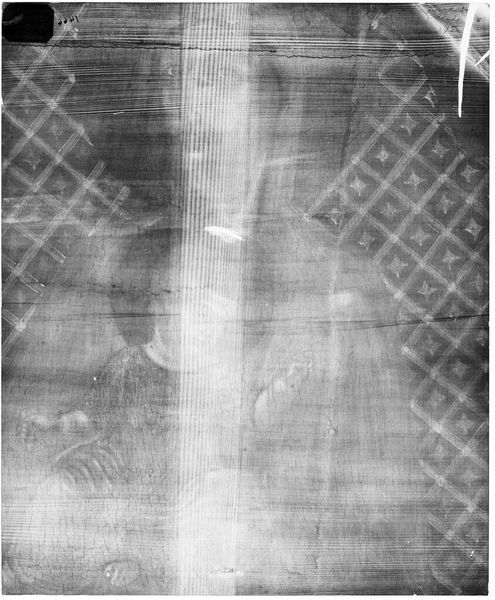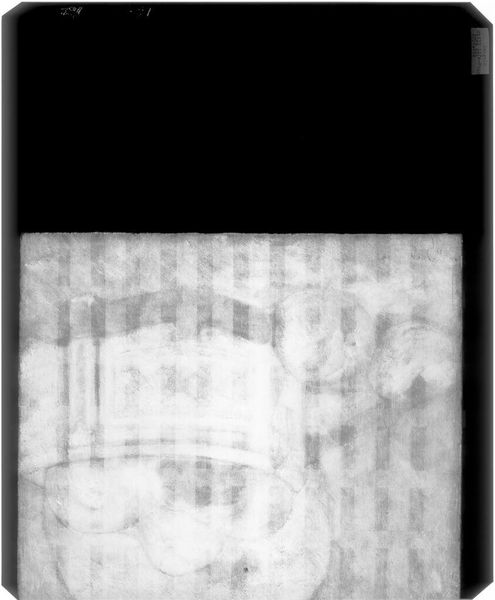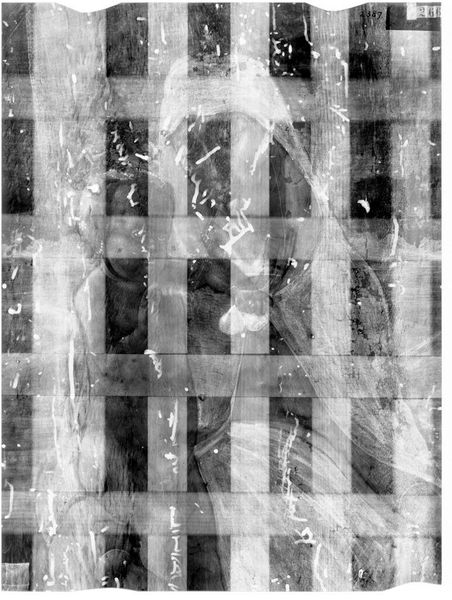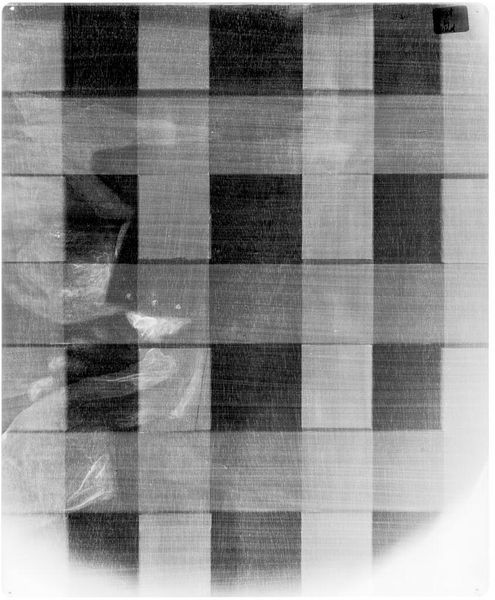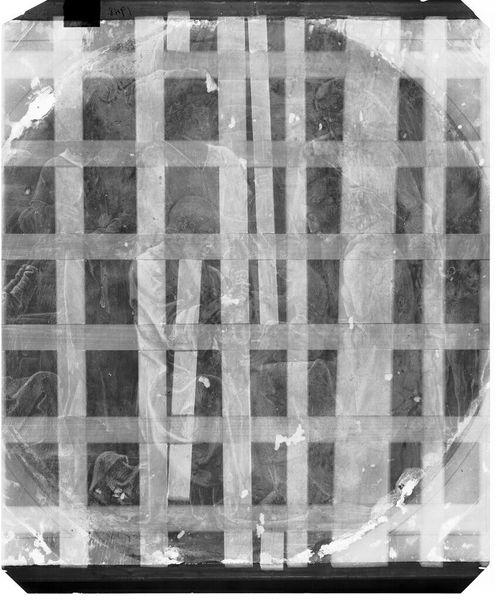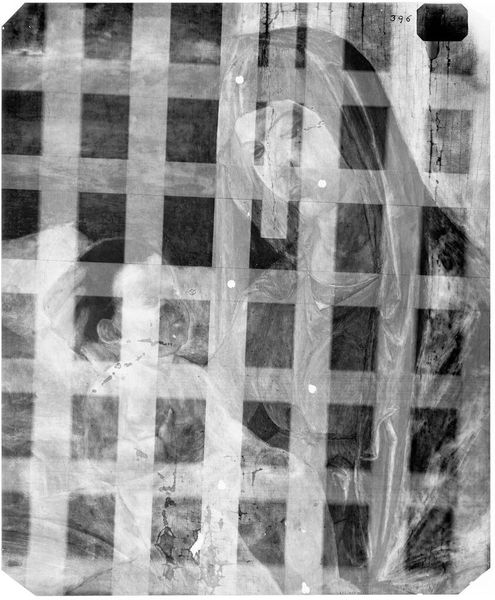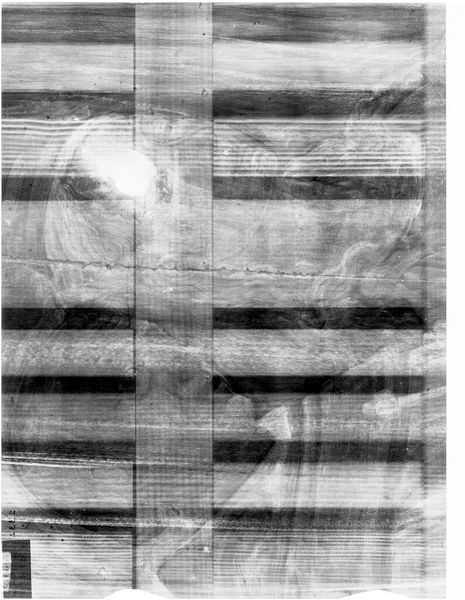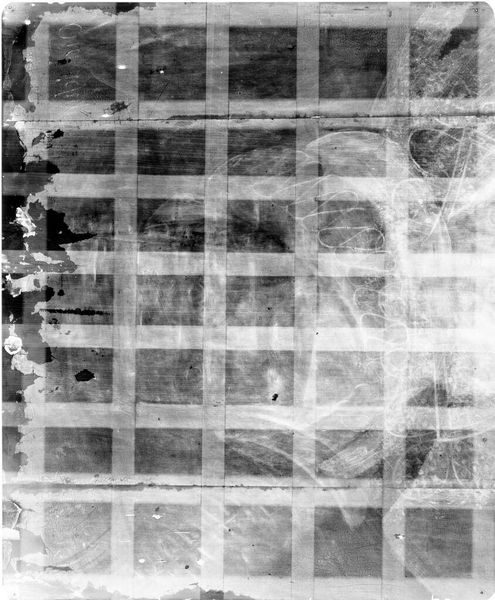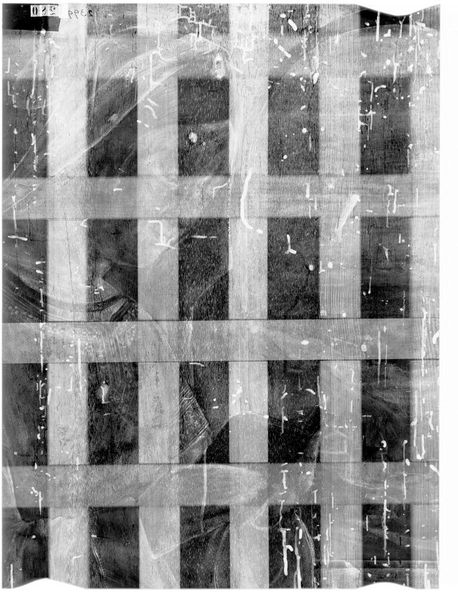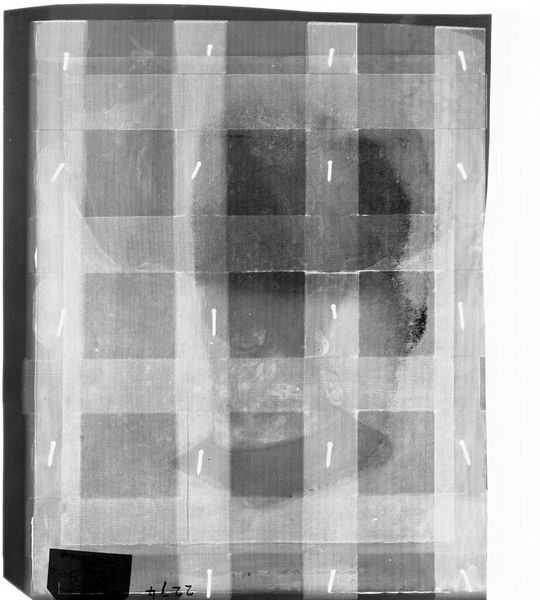
Copyright: CC0 1.0
Curator: This is an X-radiograph of "Still-Life," originally by Paul Gauguin, housed here at the Harvard Art Museums. Editor: My first impression is starkness; the contrast between the dark upper register and that pale grid conjures something like a prison window. Curator: Indeed. The radiographic process reveals what’s underneath—literally and figuratively. That grid could certainly be interpreted as confinement, but also as a framework for Gauguin's artistic vision. Editor: Perhaps. I see the faint outline of a vase or bowl beneath the grid. It’s as though the painting's symbolic core is being held captive, or perhaps protected, by this structure. Curator: That tension between the visible and the hidden is central to understanding Gauguin's complex relationship with representation. Editor: Seeing the underlying forms does shift my perception of it from a statement on confinement to a deeper rumination on layers of meaning. Curator: Precisely, it invites us to consider what's concealed beneath the surface of artistic creation.
Comments
No comments
Be the first to comment and join the conversation on the ultimate creative platform.

